A Guide For Agency Owners: 9 Tips To Doubling Your Conversions
in Marketing by David Nartin
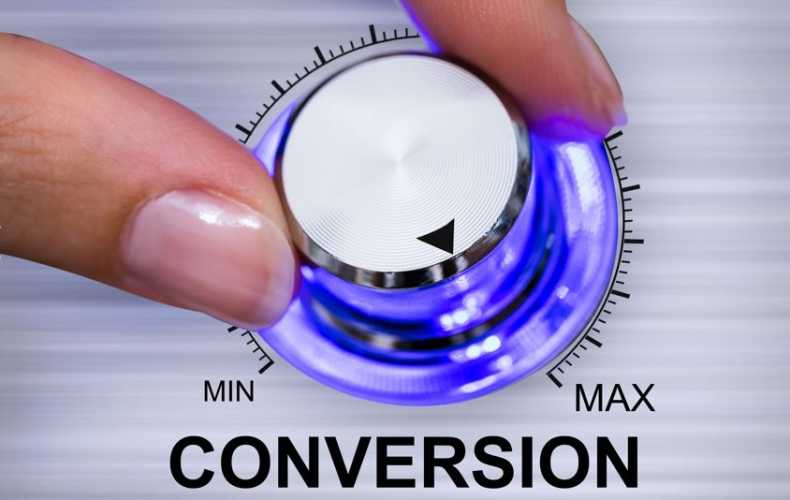
Conversion rate optimization (CRO) is one of the most effective ways of scaling any business. It also happens to be one of the more affordable options. As content marketing and ad costs increase, marketers can double down on CRO to generate more conversions from the existing traffic.
So, how do you do that?
In today’s guide, we will take you through 9 proven conversion rate optimization tactics that can take your agency to the next level. Let’s jump right in:
1. Include a pop-up on your website
You can create the best landing pages and drive tons of traffic to it, but the truth is there will always be a group of people who won’t find your value proposition convincing enough at first sight. Most of these people will try to bounce off your website.
Pop-ups like the exit-intent forms give you one more chance to convert the visitors before they leave your website. They’re a great way to capture traffic from the marketing channels you are using.
How do you create top-performing popups? A good pop-up is always short and relevant. Don’t ask for too much data from your visitors. Keep it focused on completing the desired action as quickly as possible.
The pop-up should be relevant in two ways. First, it needs to relate to what the page is about. For example, if the visitor was on a landing page about SEO audits, the pop-up should provide a valuable resource relevant to that subject.
Second, the offer on the pop-up needs to be relevant to the user and where they are in the customer journey. For instance, if the prospect lands on an informational blog post, chances are they are still at the top of the funnel. Therefore, do not expose them to a pop-up form focused on making a sale. It won’t work well. Instead, provide a ToFu resource that’s aimed at building awareness.
The exit intent pop-up is one most common types of pop-ups among agencies. It usually appears when the visitor is just about to bounce. However, you can also experiment with other kinds of pop-ups, including scroll, entry, timed, and click pop-ups.
Speaking of which, you also have to test out different aspects of your pop-up forms. For instance, if you are using timed pop-ups, test to find the perfect time when the pop-up should appear.
2. Remove any form fields that are not required
One of the easiest ways to hurt your conversions is by creating long-form fields. Long forms test the patience of your potential customers. Most leads will simply switch off and bounce from your website.
Also, remember the modern digital world is full of distractions. Your website is constantly in competition with other digital channels for the prospect’s attention. Therefore, your goal should be to convert the website visitors swiftly while you still have their attention. One of the best ways to do so is by creating a brief form.
So, comb through your form and eliminate any information that’s not critically important. In most cases, the information you need is the client’s name and email address. Sometimes even the email address alone will suffice. You can then ask for more information once the lead shows intent.
Mailshake’s website makes it easy to book a sales demo. It allows the user to select a sales demo schedule without even touching their keyboard. Once they’ve chosen a date and time, the form below asks for just four data points:
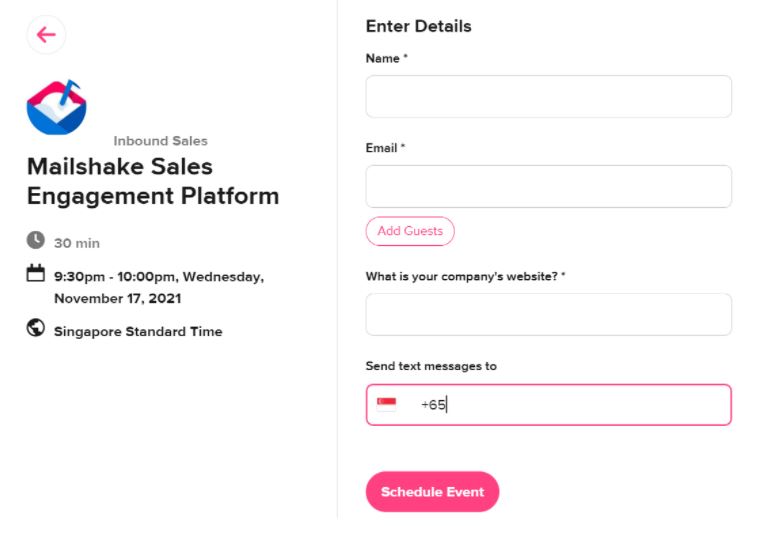
It’s worth pointing out that prospects who are lower on the sales funnel are usually more open to slightly longer fields. You can, therefore, request more information when dealing with these clients.
Still, you should make life easier for them with an easy-to-fill form. Use auto-fill functions & smart defaults, optimize the forms for mobile devices, sequence the form logically, and include a progress bar.
3. Make use of testimonials
Human beings generally prefer tried and tested products. According to one study, that nine out of ten consumers go through user reviews before making a purchase.
Most people checking out your services will want to know whether your expertise has helped anyone else. That’s where testimonials come in.
Client testimonials give you the social proof you need to get prospects across the line. But make sure you're publishing authentic testimonials. To get these testimonials, you may visit review sites such as Yelp. You can also ask satisfied clients to write a review that you can post on your website. In return, you can link back to the client’s website.
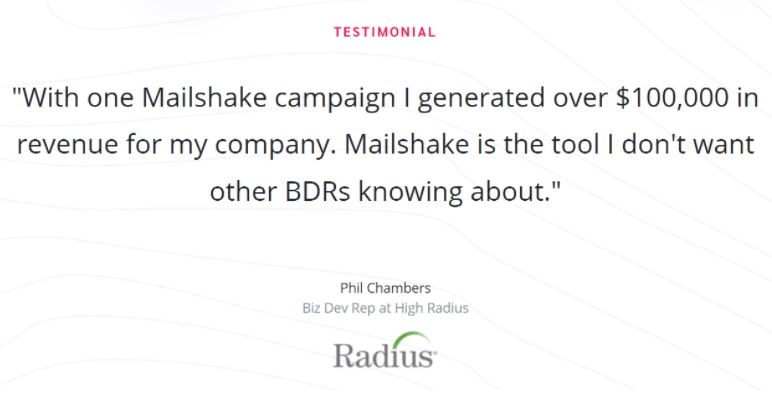
Besides testimonials, marketing agencies should try and publish at least one case study. Testimonials are super effective, but they aren’t as detailed as case studies. Case studies allow you to demonstrate your expertise with actual metrics. This should boost your conversion rate even further.
4. Include a live chat option
It’s hard to cover all customer questions on your landing page. There are also some questions that you just can’t anticipate. Live chat is an excellent way of addressing all such concerns from your leads.
Do you really need a live chat function when I have an exhaustive FAQ and learning center? Yes, you do. Remember that the goal is to keep your customers focused on the value proposition until they convert. Making customers go through your company blog, FAQs, etc., can easily get them sidetracked.
Also, some clients don’t have the patience or time to go searching for an answer. That’s why you need to invest in a live chat or chatbot function for your website.
5. Provide a no-questions-asked money-back guarantee
Despite all your efforts in demonstrating your expertise with testimonials and case studies, some prospects will still be wary of losing their investments. A money-back guarantee goes a long way to reduce this fear.
Once consumers know they can get their money back no-questions-asked if the results are unsatisfactory, they’ll be more likely to sign up.
For example, Mailshake provides a hassle-free money-back guarantee for our product. Right below this guarantee, you can choose between monthly and yearly plans
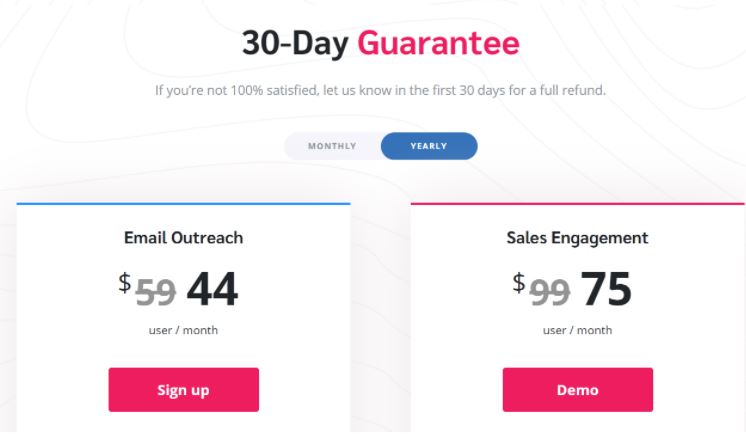
And it’s not about making conversions alone. A money-back guarantee also helps you win clients’ trust and confidence. And if your services match your claims, the clients won’t just be delighted by the great experience. Some of them will go as far as recommending your services to their peers. That’s more leads for your business.
6. Eliminate the jargon
Some agency owners make the mistake of showcasing their proficiency on their marketing copies. They’ll use jargon of all kinds, thinking that’s what prospects want to see. Wrong. Prospects usually don’t understand the technical jargon. And if they can’t understand it, do you really think your copy will convert that well? No, it won’t.
Keep your landing page copies short and sweet. Before you publish a line, ask yourself if your typical customers will understand what it means. You can even pass around the copy to several people in and outside your agency to get some feedback before publication. The same goes for creating email templates for your outreach campaigns. To get more leads, make sure that you make a strong case for your business by highlighting how you can help and not overwhelm the readers with jargon.
7. Get rid of distractions
Some sales and landing pages do not convert well because they’re full of distractions. When you have various links directing website visitors to different pages, a good percentage of the visitors will click on those links and not your CTA. You don’t want that.
The primary goal of a landing page is to convert as much traffic as possible. Remove any links that do not support this goal.
On the other hand, you should make your calls to action stand out. Do this by using a contrasting color and bigger buttons. If you need to include a link to another page on the sales page, make sure the link does not compete for the user’s attention with the CTA.
SaaS companies are particularly good at playing around with CTA colors and placement to get the best results. For example, we have two key links on our sales software landing page: a signup, and book demo button. Both can earn us leads, but of course,money-back you’d prefer if the prospects sign up right away. That’s why the SignUp button pops out more than the book demo option.
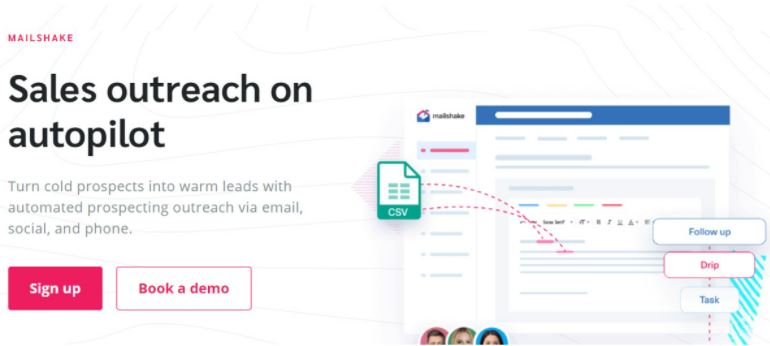
Source: MailShake Landing Page
Use a similar approach if you have to include more than one link on your landing page.
8. Use FOMO to create a sense of urgency
Creating a sense of urgency is one of the most effective ways to speed up conversions. It’s also a pretty straightforward tactic to implement.
For example, if you have a content marketing agency, you could run a discounted offer on one of your plans. But instead of enticing prospects with the offer alone, make it time-limited. Even better, attach a timer. You’ll see more of your prospects jumping in on the offer before it’s too late.
You’re free to test out different FOMO techniques until you find one that works for your unique audience. Speaking of which, let’s briefly talk about the role of split tests in conversion rate optimization.
9. Run an A/B test
Finally, run A/B tests to optimize your landing pages, sales emails, and any other marketing technique you are using to improve conversion rate. The goal of these tests is to experiment with one or more variables and determine which variants produce the highest conversions.
For example, you can test different versions of your landing page. One could have a CTA like “Get Started” and another “Claim Your Free Consultation.” After running the test for some time, the metrics will show you which of the two buttons get the best results.
A/B tests can be used to test just about any element, but you need to be very strategic. For starters, never test too many elements at once. That will make it hard to attribute the results to a specific element.
Second, you don’t need to test everything on your landing page. Prioritize the critical variables known for impacting conversions. These include call-to-action buttons, value proposition, headings, copy length, and page design.
A/B tests are great at eliminating lost opportunities. Running the tests consistently and making the necessary adjustments also helps you stay ahead of the competition.
Wrapping Up
The competition among advertising and marketing agencies has increased significantly in recent years. Driving traffic to websites is also getting complex and expensive. Therefore, you cannot afford to have visitors leave your website before converting. You must pay attention to conversion rate optimization if your agency is to survive.
The ten tips discussed above are a great place to start. These techniques have helped dozens of other agencies, so there’s no reason they shouldn’t work for yours as well. Add them to your marketing blueprint today and be relentless with the implementation.




